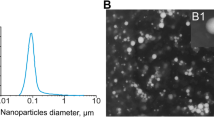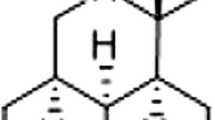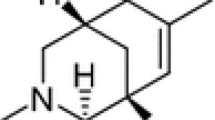Abstract
Salidroside, a phenol glycoside of plant origin, has been documented to possess a broad spectrum of pharmacological properties, including protective effects against neuronal death induced by different insults. To provide further insights into the neuroprotective functions peculiar to salidroside, this study used primary cultured cortical neurons of rats as a cell model to examine whether salidroside was able to prevent against cell damage after exposure to cobalt chloride (CoCl2), a hypoxia-inducing agent. The data from 3-(4,5-dimethylthiazol-2-yl)-2,5-diphenyltetrazolium bromide test, Hoechst33342 staining, terminal deoxynucleotidyl transferase dUTP-mediated nicked end labeling assay, and Bax/Bcl-2 ratio analysis indicated that salidroside pretreatment attenuated hypoxia-induced apoptotic cell death of primary cultured cortical neurons in a dose-dependent manner. Moreover, preliminary exploration of the possible mechanisms suggested that the protective effects of salidroside, shown in our experimental setting, might probably be mediated by enhancing the expression of hypoxia-inducible factor-1α, alleviating the increase of intracellular reactive oxygen species levels, and inhibiting over-expression of nuclear factor-kappa B protein.









Similar content being viewed by others
References
Darbinyan V, Kteyan A, Panossian A, Gabrielian E, Wikman G, Wagner H (2000) Rhodiola rosea in stress induced fatigue: a double blind cross-over study of a standardized extract SHR-5 with a repeated low-dose regimen on the mental performance of healthy physicians during night duty. Phytomedicine 7:365–371
Lanza A, Martinez M, Matellano L, Carretero C, Castillo L, Sen A, Benito P (2001) Lignan and phenylpropanoid glycosides from Phillyrea latifolia and their in vitro anti-inflammatory activity. Planta Med 67:219–223
Iaremii I, Grigor’eva N (2002) Hepatoprotective properties of liquid extract of Rhodiola rosea. Eksp Klin Farmakol 65:57–59
De Sanctis R, De Bellis R, Scesa C, Mancini U, Cucchiarini L, Dachà M (2004) In vitro protective effect of Rhodiola rosea extract against hypochlorous acid-induced oxidative damage in human erythrocytes. Biofactors 20:147–159
Kucinskaite A, Briedis V, Savickas A (2004) Experimental analysis of therapeutic properties of Rhodiola rosea L. and its possible application in medicine. Medicina (Kaunas, Lithunia) 40:614
Mattioli L, Perfumi M (2007) Rhodiola rosea L. extract reduces stress-and CRF-induced anorexia in rats. J Psychopharmacol 21:742–750
Ming D, Hillhouse B, Guns E, Eberding A, Xie S, Vimalanathan S, Towers G (2005) Bioactive compounds from Rhodiola rosea (Crassulaceae). Phytother Res 19:740–743
Perfumi M, Mattioli L (2007) Adaptogenic and central nervous system effects of single doses of 3% rosavin and 1% salidroside Rhodiola rosea L. extract in mice. Phytother Res 21:37–43
Prasad D, Ram M, Kumar R, Sawhney R, Sharma S, Ilavazhagan G, Kumar D, Banerjee P (2005) Cytoprotective and antioxidant activity of Rhodiola imbricata against tert-butyl hydroperoxide induced oxidative injury in U-937 human macrophages. Mol Cell Biochem 275:1–6
Chen X, Liu J, Gu X, Ding F (2008) Salidroside attenuates glutamate-induced apoptotic cell death in primary cultured hippocampal neurons of rats. Brain Res 1238:189–198
Chen X, Zhang Q, Cheng Q, Ding F (2009) Protective effect of salidroside against H2O2-induced cell apoptosis in primary culture of rat hippocampal neurons. Mol Cell Biochem 332:85–93
Yu S, Liu M, Gu X, Ding F (2008) Neuroprotective effects of salidroside in the PC12 cell model exposed to hypoglycemia and serum limitation. Cell Mol Neurobiol 28:1067–1078
Yu S, Shen Y, Liu J, Ding F (2010) Involvement of ERK1/2 pathway in neuroprotection by salidroside against hydrogen peroxide-induced apoptotic cell death. J Mol Neurosci 40:321–331
Zhang L, Yu H, Sun Y, Lin X, Chen B, Tan C, Cao G, Wang Z (2007) Protective effects of salidroside on hydrogen peroxide-induced apoptosis in SH-SY5Y human neuroblastoma cells. Eur J Pharmacol 564:18–25
Zhang L, Yu H, Zhao X, Lin X, Tan C, Cao G, Wang Z (2010) Neuroprotective effects of salidroside against beta-amyloid-induced oxidative stress in SH-SY5Y human neuroblastoma cells. Neurochem Int 57:547–555
Wang G, Hazra TK, Mitra S, Lee HM, Englander EW (2000) Mitochondrial DNA damage and a hypoxic response are induced by CoCl2 in rat neuronal PC12 cells. Nucleic Acids Res 28:2135
Chandel NS, Maltepe E, Goldwasser E, Mathieu CE, Simon MC, Schumacker PT (1998) Mitochondrial reactive oxygen species trigger hypoxia-induced transcription. Proc Natl Acad Sci USA 95:11715–11720
Hou RCW, Huang HM, Tzen JTC, Jeng KCG (2003) Protective effects of sesamin and sesamolin on hypoxic neuronal and PC12 cells. J Neurosci Res 74:123–133
Jung JY, Roh KH, Jeong YJ, Kim SH, Lee EJ, Kim MS, Oh WM, Oh HK, Kim WJ (2008) Estradiol protects PC12 cells against CoCl2-induced apoptosis. Brain Res Bull 76:579–585
Wang H, Joseph J (1999) Quantifying cellular oxidative stress by dichlorofluorescein assay using microplate reader. Free Radic Biol Med 27:612–616
Crompton M (2000) Bax, bid and the permeabilization of the mitochondrial outer membrane in apoptosis. Curr Opin Cell Biol 12:414–419
Gross A, McDonnell JM, Korsmeyer SJ (1999) BCL-2 family members and the mitochondria in apoptosis. Genes Dev 13:1899–1911
Bar-Am O, Weinreb O, Amit T, Youdim MBH (2005) Regulation of Bcl-2 family proteins, neurotrophic factors, and APP processing in the neurorescue activity of propargylamine. FASEB J 19:1899–1901
Yang E, Korsmeyer SJ (1996) Molecular thanatopsis: a discourse on the BCL2 family and cell death. Blood 88:386–401
Pugh C, Ratcliffe P (2003) Regulation of angiogenesis by hypoxia: role of the HIF system. Nat Med 9:677–684
Wenger R (2002) Cellular adaptation to hypoxia: O2-sensing protein hydroxylases, hypoxia-inducible transcription factors, and O2-regulated gene expression. FASEB J 16:1151
Chi J, Wang Z, Nuyten D, Rodriguez E, Schaner M, Salim A, Wang Y, Kristensen G, Helland A, Borresen-Dale A (2006) Gene expression programs in response to hypoxia: cell type specificity and prognostic significance in human cancers. PLoS Med 3:395
Lee J, Bae S, Jeong J, Kim S, Kim K (2004) Hypoxia-inducible factor (HIF-1) alpha: its protein stability and biological functions. Exp Mol Med 36:1
Aragones J, Jones DR, Mart NS, Juan MAS, Alfranca A, Vidal F, Vara A, Merida I, Landazuri MO (2001) Evidence for the involvement of diacylglycerol kinase in the activation of hypoxia-inducible transcription factor 1 by low oxygen tension. J Biol Chem 276:10548–10555
Shi H (2009) Hypoxia inducible factor 1 as a therapeutic target in ischemic stroke. Curr Med Chem 16:4593–4600
Liu J, Narasimhan P, Yu F, Chan PH (2005) Neuroprotection by hypoxic preconditioning involves oxidative stress-mediated expression of hypoxia-inducible factor and erythropoietin. Stroke 36:1264–1269
Callapina M, Zhou J, Schmid T, Köhl R, Brüne B (2005) NO restores HIF-1 [alpha] hydroxylation during hypoxia: Role of reactive oxygen species. Free Radic Biol Med 39:925–936
Domanska-Janik K, Bronisz-Kowalczyk A, Zajac H, Zablocka B (2000) Interrelations between nuclear-factor kappa B activation, glial response and neuronal apoptosis in gerbil hippocampus after ischemia. Acta Neurobiol Exp 61:45–52
Mattson M, Culmsee C, Yu Z, Camandola S (2000) Roles of nuclear factor κB in neuronal survival and plasticity. J Neurochem 74:443–456
Ravati A, Ahlemeyer B, Becker A, Klumpp S, Krieglstein J (2001) Preconditioning-induced neuroprotection is mediated by reactive oxygen species and activation of the transcription factor nuclear factor-κB. J Neurochem 78:909–919
Crawford M, Krishnamoorthy R, Rudick V, Collier R, Kapin M, Aggarwal B, Al-Ubaidi M, Agarwal N (2001) Bcl-2 overexpression protects photooxidative stress-induced apoptosis of photoreceptor cells via NF-[kappa] B preservation* 1. Biochem Biophys Res Commun 281:1304–1312
Kim G, Xu J, Song S, Yan P, Ku G, Xu X, Hsu C (2001) Tumor necrosis factor receptor deletion reduces nuclear factor-{kappa} B activation, cellular inhibitor of apoptosis protein 2 expression, and functional recovery after traumatic spinal cord injury. J Neurosci 21:6617
Ramirez S, Sanchez J, Dimitri C, Gelbard H, Dewhurst S, Maggirwar S (2001) Neurotrophins prevent HIV Tat-induced neuronal apoptosis via a nuclear factor-κB (NF-κB)-dependent mechanism. J Neurochem 78:874–889
Yabe T, Wilson D, Schwartz J (2001) NFκB activation is required for the neuroprotective effects of pigment epithelium-derived factor (PEDF) on cerebellar granule neurons. J Biol Chem 276:43313
Clemens J, Stephenson D, Yin T, Smalstig E, Panetta J, Little S, Dietrich W, Bethea J (1998) Drug-induced neuroprotection from global ischemia is associated with prevention of persistent but not transient activation of nuclear factor-{kappa} B in rats* editorial comment. Stroke 29:677
Levites Y, Youdim M, Maor G, Mandel S (2002) Attenuation of 6-hydroxydopamine (6-OHDA)-induced nuclear factor-kappaB (NF-[kappa] B) activation and cell death by tea extracts in neuronal cultures1. Biochem Pharmacol 63:21–29
Ueno T, Sawa Y, Kitagawa-Sakakida S, Nishimura M, Morishita R, Kaneda Y, Kohmura E, Yoshimine T, Matsuda H (2001) Nuclear factor-{kappa} B decoy attenuates neuronal damage after global brain ischemia: A future strategy for brain protection during circulatory arrest. J Thorac Cardiovasc Surg 122:720
Rius J, Guma M, Schachtrup C, Akassoglou K, Zinkernagel AS, Nizet V, Johnson RS, Haddad GG, Karin M (2008) NF-kappaB links innate immunity to the hypoxic response through transcriptional regulation of HIF-1alpha. Nature 453:807–811
Van Uden P, Kenneth NS, Rocha S (2008) Regulation of hypoxia-inducible factor-1 by NF- B. Biochem J 412:477–484
Acknowledgments
This study was supported by the National Natural Science Foundation of China (Grant No. 30870881), a Project Funded by the Priority Academic Program Development of Jiangsu Higher Education Institutions, and the key project of Jiangsu Education Department (Grant No. 08KJA310002).
Author information
Authors and Affiliations
Corresponding author
Rights and permissions
About this article
Cite this article
Zhang, S., Chen, X., Yang, Y. et al. Neuroprotection against cobalt chloride-induced cell apoptosis of primary cultured cortical neurons by salidroside. Mol Cell Biochem 354, 161–170 (2011). https://doi.org/10.1007/s11010-011-0815-4
Received:
Accepted:
Published:
Issue Date:
DOI: https://doi.org/10.1007/s11010-011-0815-4




